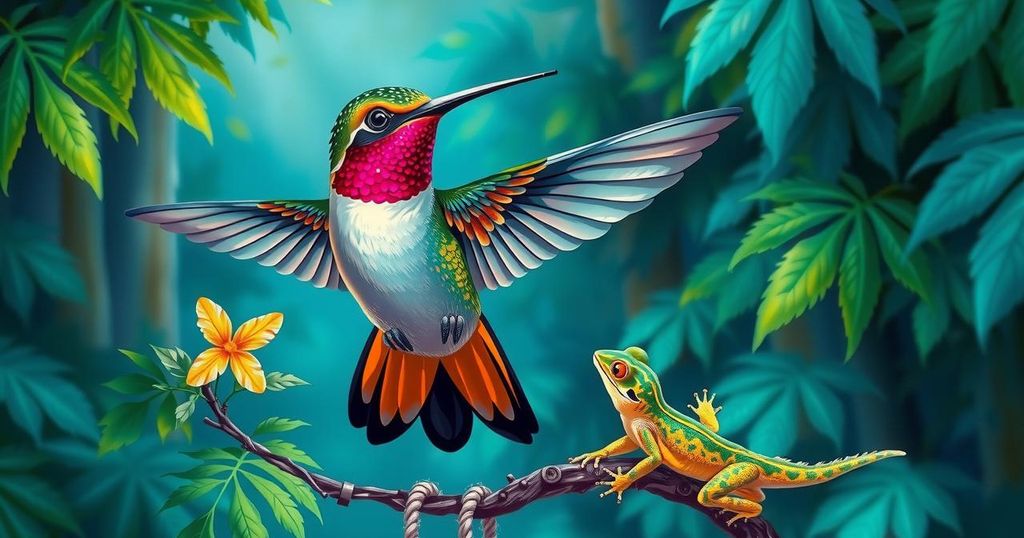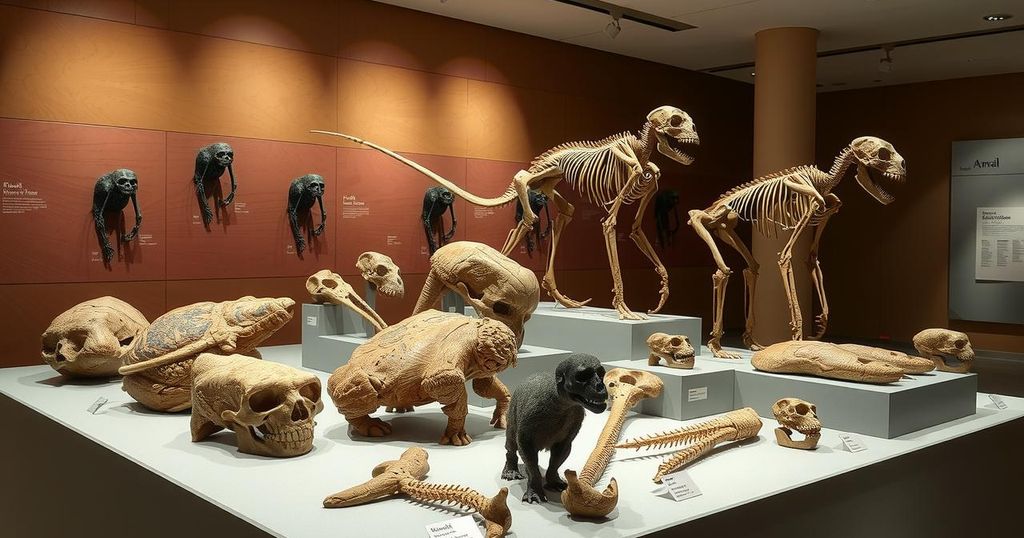Science
ASIA, BENNETT, CALIFORNIA ACADEMY OF SCIENCES, CHEESE, EUROPE, FOSSIL DISCOVERY, FOSSILS, INDIA, IS, KEW GARDENS, LONDON, MEXICO, NORTH AMERICA, PALEONTOLOGY, PENSOFT, PHILIPPINES, SCIENCE, SHANNON BENNETT, UNITED KINGDOM, VINCENT VAN GOGH, WESTERN GHATS, WILDLIFE, WILDLIFE CONSERVATION
Amina Hassan
0 Comments
New Species Discovered in 2024: From Giant Hummingbirds to Starry Night Geckos
In 2024, scientific bodies unveiled an array of remarkable new species, including the world’s biggest hummingbird and a colorful ‘starry night’ gecko. The California Academy of Sciences and the Natural History Museum in London reported a total of 328 new species. These discoveries underscore the importance of documenting biodiversity for environmental conservation. Highlights included flora, fauna, and even a new wasp species found near Rice University in Houston.
In the ever-fascinating realm of biology, 2024 has not disappointed with a slew of remarkable new species popping up on the radar. Recently, various scientific organizations, eager to share their findings, showcased an incredible array of fresh discovers—138 new lifeforms by the California Academy of Sciences alone. This year, highlight species include a strikingly colorful “starry night” gecko and the world’s largest hummingbird, also making waves in biodiversity discussions.
Shannon Bennett, the chief scientist from the California Academy, articulated the significance of these discoveries: “Finding and describing new species is vital for understanding the biodiversity of our planet and protecting it from further loss.” She pointed out how only a tiny portion, about a tenth, of our Earth’s species have been documented, stressing the extensive challenges that lie ahead in safeguarding our planet’s ecosystems.
Across the pond, scientists at the Natural History Museum in London upped the ante with the discovery of 190 new species, covering both fossils and living specimens. This eclectic mix includes a peculiar vegetarian piranha dubbed after a notorious literary villain, the Eye of Sauron from the famed “Lord of the Rings” saga. There’s also a clearwing moth added to the list of which will be familiar to many.
Back at the drawing board, Kew Gardens and scientific publisher Pensoft have graciously presented top ten lists of their favorite new finds—an annual tradition that seems to gain more charm with each year. Notably, the “starry night” gecko—Cnemaspis vangoghi—was discovered in India’s Southwestern Ghats, a nod to Van Gogh’s iconic painting, celebrated for its stunning coloration.
In fact, Ishan Agarwal from the Thackeray Wildlife Foundation, who announced this gecko’s discovery, drew a direct connection: “The striking color of the new species is reminiscent of one of his most iconic paintings, The Starry Night.” Pensoft’s editor called it a delightful, if somewhat arbitrary way, to reflect on the year’s fascinating findings.
Then there’s the new flora—Aphelandra almanegra. It flaunts gorgeous pink flowers reminiscent of a vibrant tropical sunset, found nestled within Colombia’s dry forests, but it ranks just No. 3 on Kew Garden’s list. With its beautiful spikes and potential as a house plant, its beauty is tempered by the reality of habitat loss, putting it at risk.
Also making the cut is the vegetarian piranha from Brazil—Myloplus sauron—revealed amid concerns over the Belo Monte dam project. Rupert Collins, senior curator of fish at the museum, raised critical points regarding the often-overlooked biodiversity when major construction projects are planned, highlighting that, “Basically, we don’t fully know what lives in these places.”
And in a bit of local intrigue, a peculiar clearwing moth emerged from the living room of a young girl named Daisy in Wales. She discovered it was hatched from a seed pod smuggled back from Guyana by her mother, an experience propelled into discovery with the help of the Natural History Museum.
Further adding to the treasure trove of findings is the Bathygobius mero, a new goby fish found residing in Indonesian sponge, a unique twist in fish behavior. Studying these new species isn’t just for curiosity—researchers emphasize it holds significant implications for understanding ecosystems.
On to avian wonders, the southern giant hummingbird has now claimed its rightful title as the world’s largest. Revealed through tracking efforts, this bird was identified with the help of mini GPS backpacks affixed during breeding investigations. The new species, named Patagona chaski, finds its niche high in the Andes, rubbing shoulders with existing giant hummingbirds.
Let’s not forget the bright and transparent Marco Reyes’ glass frog from Ecuador, whose distinctive features brought it recognition. Alongside it, our new armadillo species, the Guianan long-nosed armadillo, emerged as a long-lost cousin after revealing itself with modern genetic testing. It certainly seems like Mother Nature had a busy year.
There’s even joy in the urban sprawl—scientists uncovered a new parasitoid wasp, Chrysonotomyia susbelli, hiding right on the Rice University campus. “You don’t have to travel to a distant rainforest to find new and beautiful things—just step outside and look,” said Scott Egan, encouraging those curious to start their own explorations right where they are.
The discoveries from 2024 underline that our planet is bursting with life yet to be fully explored. There’s a lot out there and through these scientific endeavors, the hope is to safeguard the future of our biodiversity and the delights it holds. Truly, the year has been a vivid reminder that the wild is still hiding wonders, waiting patiently for their turn in the spotlight.
In summary, 2024 has been a remarkable year for biological discoveries, featuring 138 new species reported by the California Academy of Sciences, and even more announced by the Natural History Museum in London. From stunning creatures like the ‘starry night’ gecko to the world’s largest hummingbird, these findings highlight that there’s still much unknown about our biodiversity. As researchers continue to document new species, it’s clear that each discovery holds the potential to deepen our understanding of ecosystems and environmental preservation. The new species remind us of the rich and often unexplored tapestry of life around us, beckoning curiosity and conservation efforts alike.
Original Source: www.cbc.ca




Post Comment